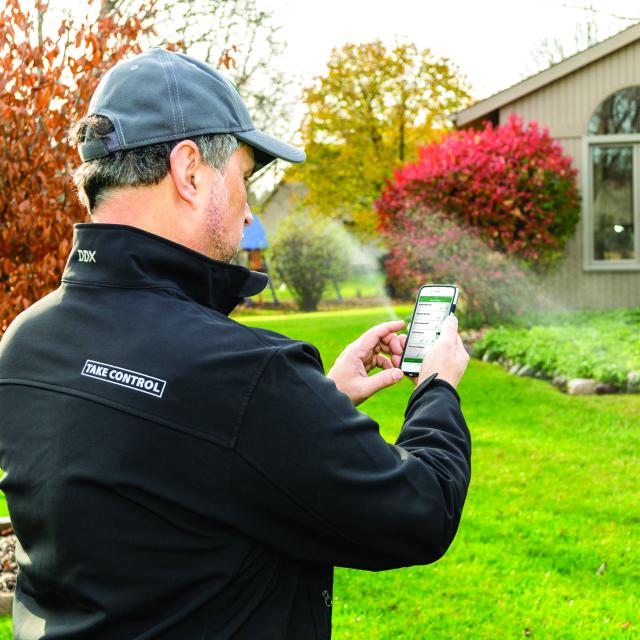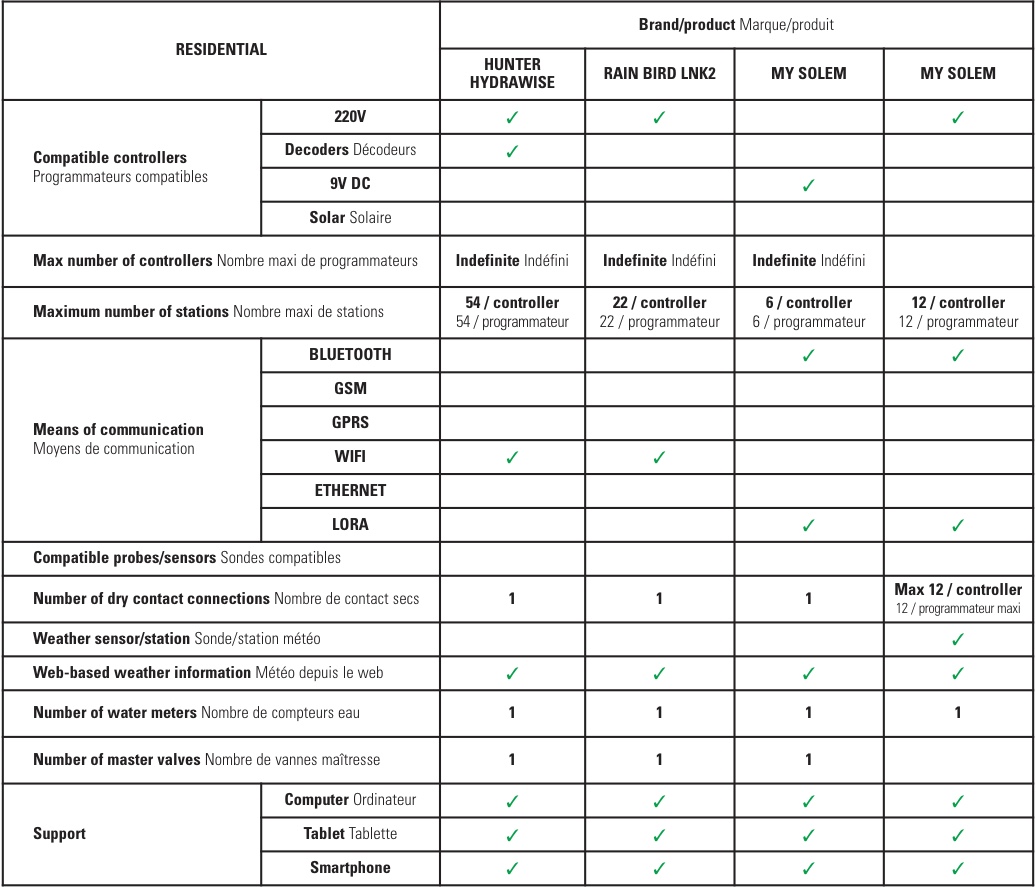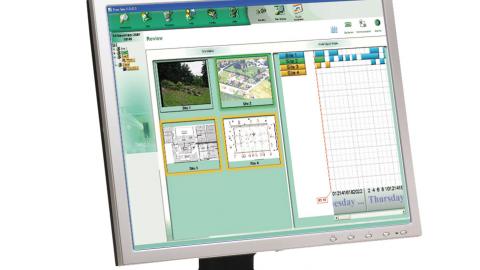The automatic centralised irrigation control system that first appeared in France in the 90s consists of a combination of products and techniques that allow for the remote management of irrigation controllers.

Apart from remote management, the different kinds of sensors offer the possibility of information being reported back in the case of abnormal functioning (water leak, valve shorting out…). The connection with the meteorological data (rain sensors, soil moisture sensors, physical and virtual weather sensors) allows the system to assist the user in his or her irrigation scheduling, resulting in significant savings being made.
The objective of this concept is, therefore, a better use of the water resource and a gain in time for the users.
Furthermore, given that originally the complicated nature of the system and its cost made it affordable only to the larger organisations, this device was simplified and made more accessible in the early 2010s thanks to the development of smart phones and its use has now even become possible for private gardens.
A small glossary
Central control: Home-based system allowing the user to have remote access and control of automatic irrigation.
Benefits of the central control: Saving on time and money, saving on water through the use of weather sensors. Time gained through the use of simplified alerts and diagnostics. No more unnecessary field trips.
Means of remote communication between the software or application and the automated terminal or controllers:
• GSM modem, uses the telephone network. Used less and less in recent systems because this technique has become obsolete.
• WIFI modem: allows an existing system (box) to be connected by WIFI. Very widely used for residential systems.
• GPRS modem: allows direct connection to the Internet. Requires a SIM card and a subscription with an operator.
• ETHERNET modem: can be connected by RJ45 cable connector to an existing network (fibre optics, wired internet…). Widely used on large local authority networks (tramways…)
• Bluetooth communication: used for sharing data over a short distance (around 20/30m) between the controller and the smartphone. Very often used on standalone battery-operated systems.
• LORA technique: long-range radio communication (around 800 m in the town and several kilometres in rural areas).
Sensor: a simple probe (system switch) that allows information (rain, frost, wind...) to be provided and turn the switch on or off when a threshold is reached. It allows for programmes to be stopped when justified by the weather conditions.
Weather sensor or station: provides precise information about the weather conditions and enables the user to increase or decrease the irrigation schedule. Leads to significant savings in water, whether with the use of sensors or from information provided by weather-service suppliers.
Water meter: allows the flow rate to be recorded in real time and for any possible leak to be detected in order to stop the valve or programme when necessary and thus be able to “save” litres of water.
Residential system: equipment and techniques used for the irrigation of a private garden, which generally includes a number of solenoid valves and one single controller, known as a “single site” (one single place of connection).
Commercial installation: equipment and techniques used for the irrigation of large areas, which generally comprise hundreds of solenoid valves and dozens of “multi-site” controllers (several places of connection).
Smart city: or intelligent city. Allows a city or a local authority, by using information technologies, to improve the services given to the inhabitants and reduce costs over the whole network : traffic and transport, water networks, waste management, information systems, the management of green spaces and their irrigation... This supervision is generally carried out from a single location. The irrigation controllers should be capable of “interacting” with the central system.
Different commercial systems currently available :

Example of the architecture of a Rain Bird IQ4 commercial system:

Examples of residential systems currently available :

Example of the architecture of Hunter’s Hydrawise residential system:

Conclusion
With the tools currently available, all of the major manufacturers of irrigation equipment are offering central control solutions for automatic irrigation systems, which are reliable, inexpensive and suitable for all types of projects or properties. The savings on water announced and achieved are around 30% to 50% compared with a traditional programming system. It is, therefore, important for the whole profession, bearing in mind the ecological, financial and media issues at stake, to promote and implement this type of solution. n

